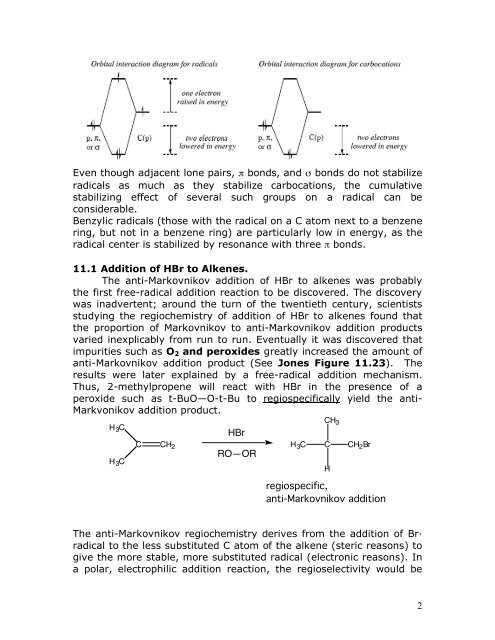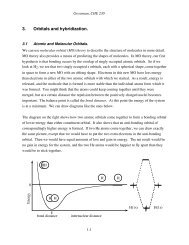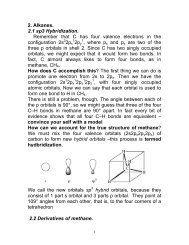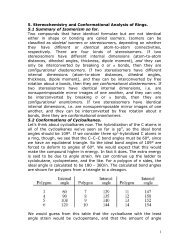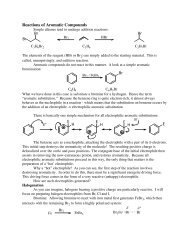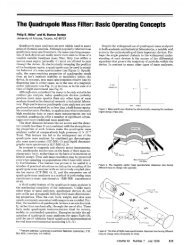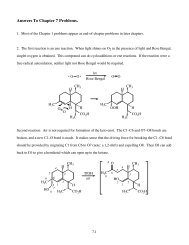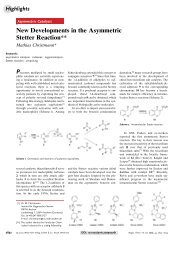Chapter 11. Free Radical Reactions - Chemistry
Chapter 11. Free Radical Reactions - Chemistry
Chapter 11. Free Radical Reactions - Chemistry
Create successful ePaper yourself
Turn your PDF publications into a flip-book with our unique Google optimized e-Paper software.
Even though adjacent lone pairs, π bonds, and σ bonds do not stabilize<br />
radicals as much as they stabilize carbocations, the cumulative<br />
stabilizing effect of several such groups on a radical can be<br />
considerable.<br />
Benzylic radicals (those with the radical on a C atom next to a benzene<br />
ring, but not in a benzene ring) are particularly low in energy, as the<br />
radical center is stabilized by resonance with three π bonds.<br />
<strong>11.</strong>1 Addition of HBr to Alkenes.<br />
The anti-Markovnikov addition of HBr to alkenes was probably<br />
the first free-radical addition reaction to be discovered. The discovery<br />
was inadvertent; around the turn of the twentieth century, scientists<br />
studying the regiochemistry of addition of HBr to alkenes found that<br />
the proportion of Markovnikov to anti-Markovnikov addition products<br />
varied inexplicably from run to run. Eventually it was discovered that<br />
impurities such as O2 and peroxides greatly increased the amount of<br />
anti-Markovnikov addition product (See Jones Figure <strong>11.</strong>23). The<br />
results were later explained by a free-radical addition mechanism.<br />
Thus, 2-methylpropene will react with HBr in the presence of a<br />
peroxide such as t-BuO—O-t-Bu to regiospecifically yield the anti-<br />
Markvonikov addition product.<br />
H3C<br />
H 3C<br />
C<br />
CH 2<br />
HBr<br />
RO—OR<br />
H 3C C<br />
CH 3<br />
H<br />
CH 2Br<br />
regiospecific,<br />
anti-Markovnikov addition<br />
The anti-Markovnikov regiochemistry derives from the addition of Br·<br />
radical to the less substituted C atom of the alkene (steric reasons) to<br />
give the more stable, more substituted radical (electronic reasons). In<br />
a polar, electrophilic addition reaction, the regioselectivity would be<br />
2


